The Best Time to Visit Malta: A Month-by-Month Breakdown
Last Updated: Jan 28, 2024
Reading Time: 14 minutes
By: Shaun
Malta is considered an all-year-round destination. With its rich history, culture, and natural beauty of its beaches and countryside, it offers a variety of attractions and activities for travellers of all ages and interests all year round.
But when is the best time to visit this Mediterranean gem? The answer depends on several factors, such as weather, crowds, prices, and events. There is no bad time to visit Malta, but depending on your preferences and interests, some months may suit you better than others.
In this article, we will break down the pros and cons of visiting Malta in each month of the year, so you can plan your trip accordingly.
January
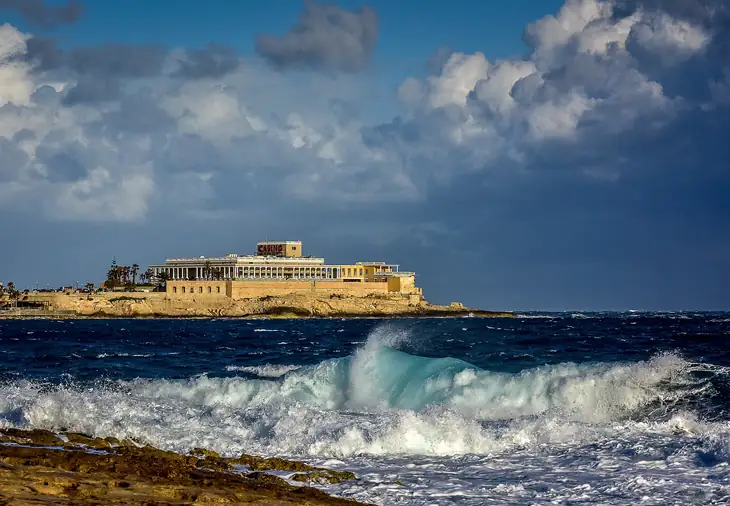
Winter in Malta | Image by Bellina 09 on Wikimedia Commons
January is the coldest month in Malta; however, compared to other European destinations, Malta still enjoys mild winter weather and plenty of sunshine. The sea temperature will be too cold for most people to swim, but some brave souls may still enjoy a dip. However, it is quite popular with divers who take advantage of the low season to dive in one of the many spots around Malta and Gozo, without the crowds that it attracts during the summer months.
January is also one of the cheapest months, with lower prices for accommodation and flights, so you can enjoy the attractions and sights without the crowds and queues and have a more authentic and relaxing experience.
The main downside of visiting Malta in January is that the days are shorter and it is very possible to have numerous cloudy and stormy days. Also, some attractions may be closed or have reduced hours during the winter season, so make sure to check before you go.
- Minimum Temperature: 9.8°C
- Maximum Temperature: 15.6°C
- Sea Temperature: 16.0°C
- Sunrise: 7:11 a.m.
- Sunset: 5:08 p.m.
February
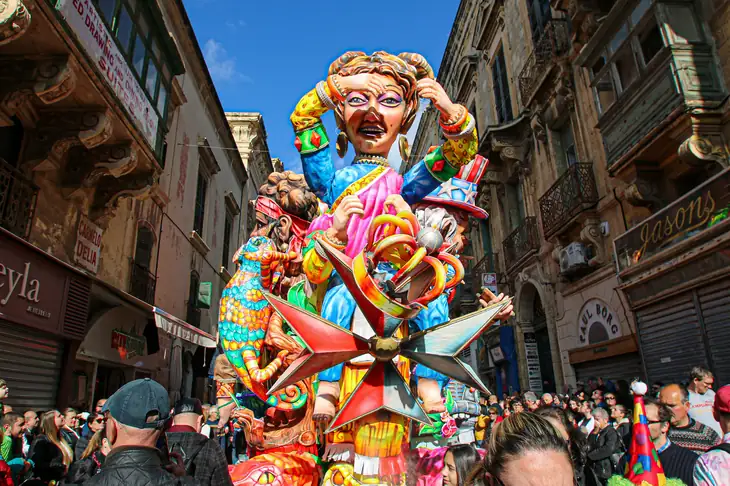
Carnival Float | Image by Roo Pitt on Flickr
February is similar to January in terms of weather, prices, and crowds, and you can also expect some rain and wind in February, so pack an umbrella and a jacket.
February is also a good month to experience some of the cultural events in Malta, such as the Feast of St. Paul’s Shipwreck on February 10th, which commemorates the arrival of Christianity in Malta. You can witness colourful processions, fireworks, and band marches in Valletta. According to tradition, St. Paul was shipwrecked on Malta in 60 AD while on his way to Rome. He performed several miracles on the island, such as healing the father of Publius, the Roman governor at the time. He also converted many Maltese to Christianity and became the patron saint of Malta.
Another highlight of visiting Malta in February is the Carnival celebrations. Carnival is a traditional festival that dates back to the 16th century, when Malta was ruled by the Knights of St. John. The carnival features colourful floats, costumes, masks, dances, and parties that last for five days before Ash Wednesday. While most Carnival celebrations are held in Valletta, Gozo too organises its own festivities, with the most famous Carnival event being the spontaneous Carnival in Nadur, where people dress up in bizarre and grotesque outfits and roam the streets at night.
Just like January, February’s main drawback is that it is still too cold for swimming and beach activities, and some attractions may still be closed or have reduced hours during this month.
- Minimum Temperature: 9.7°C
- Maximum Temperature: 15.9°C
- Sea Temperature: 15.5°C
- Sunrise: 7:01 a.m.
- Sunset: 5:37 p.m.
March
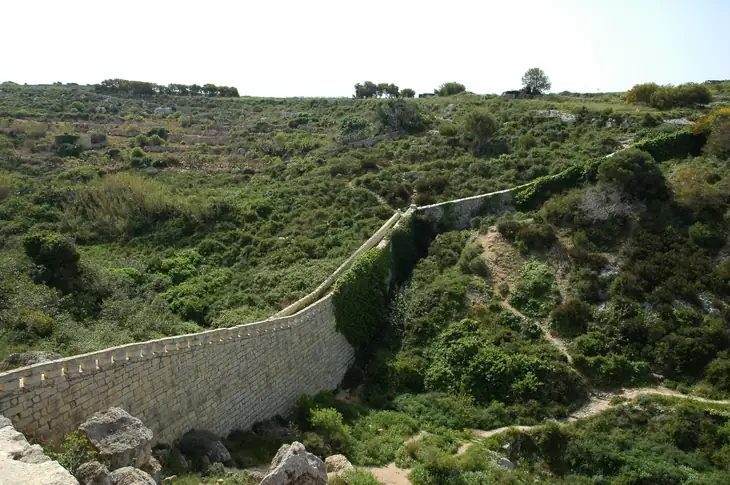
Victoria Lines right on the boundry between Mġarr and Rabat | Image by Rolf Krahl on Wikimedia Commons
Things start to turn for the better during March, when spring starts, the weather becomes warmer and sunnier, and the flowers start to bloom. March is a great month for hiking and cycling in Malta, as you can enjoy the greenery and scenery without the heat and crowds. There are many trails and routes to choose from, such as Dingli Cliffs, Selmun, Victoria Lines, and Comino.
Prices in March would still be relatively low compared to the more popular months later in the year, so you can find some good deals on accommodation and flights and have more space and privacy at the attractions and sights.
The main disadvantage of visiting Malta in March is that it is still too cold for swimming. Also, some attractions may still be closed or operating at reduced hours.
- Minimum Temperature: 10.9°C
- Maximum Temperature: 17.5°C
- Sea Temperature: 16.0°C
- Sunrise: 6:35 a.m.
- Sunset: 6:02 p.m.
April

Fireworks In Malta | Image by Meldarion Quesse on Flickr
April is one of the best months to visit Malta, as it offers ideal weather for sightseeing and outdoor activities. You can expect plenty of sunshine and blue skies, but you might get the occasional shower.
April’s highlights are the Easter celebrations and traditions in Malta. You can witness processions, pageants, statues, and exhibitions that depict the passion and resurrection of Christ. You can also taste some of the typical Easter foods, such as figolli (almond-filled pastries) and kwarezimal (honey and almond cakes).
April is also a good month to visit the many attractions around Malta, as most will have opened for the upcoming summer season. You can also attend the Malta International Fireworks Festival, a spectacular display of fireworks that lights up the night sky over the Grand Harbour and other locations as Malta celebrates the anniversary of its accession to the European Union in 2004.
The sea temperature in April would still be rather cold, so if you plan to take a dip on one of the many beaches while staying on the islands, then April is not your best option.
- Minimum Temperature: 12.8°C
- Maximum Temperature: 19.8°C
- Sea Temperature: 16.0°C
- Sunrise: 6:51 a.m.
- Sunset: 7:27 p.m.
May
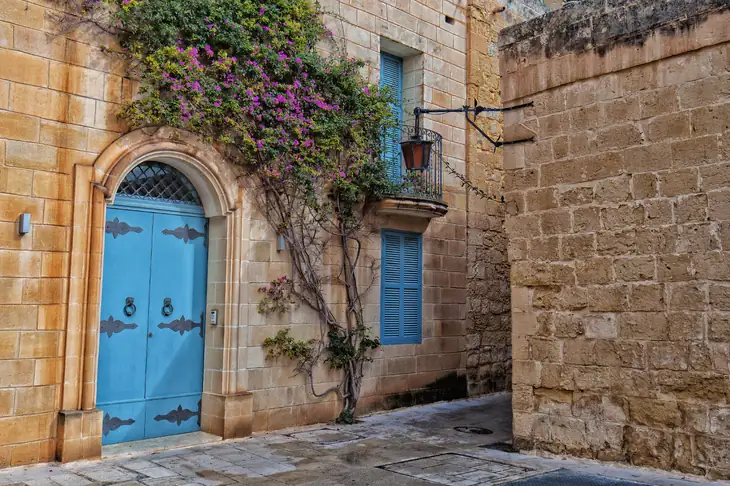
Mdina Blue Door | Image by Arne Dahl on Flickr
Our pick for the best month to visit Malta is May. May offers the perfect balance between excellent weather and crowds that would not have flocked to the many attractions. The sea temperature would have started to rise, making it very possible to take a dip, especially in the latter part of the month. The prices of flights and accommodations would also be rather moderate.
May is also a good month to visit Malta, as there are many events that take place in this month, some of which are:
Malta Fashion Week is a week-long event that showcases local and international fashion designers, models, and brands. It features catwalk shows, exhibitions, parties, and workshops.
Mdina Mediaeval Festival: A two-day event that recreates the mediaeval atmosphere and history of Mdina, the old capital of Malta. It features reenactments, parades, music, crafts, and food.
Summer Lust 2024: A two-day festival held in the town of Ħal Għaxaq which this year will feature performances by Umberto Tozzi and Anastacia.
Minimum Temperature: 16.0°C
Maximum Temperature: 23.8°C
Sea Temperature: 18.0°C
Sunrise: 6:04 a.m.
Sunset: 7:51 p.m.
June
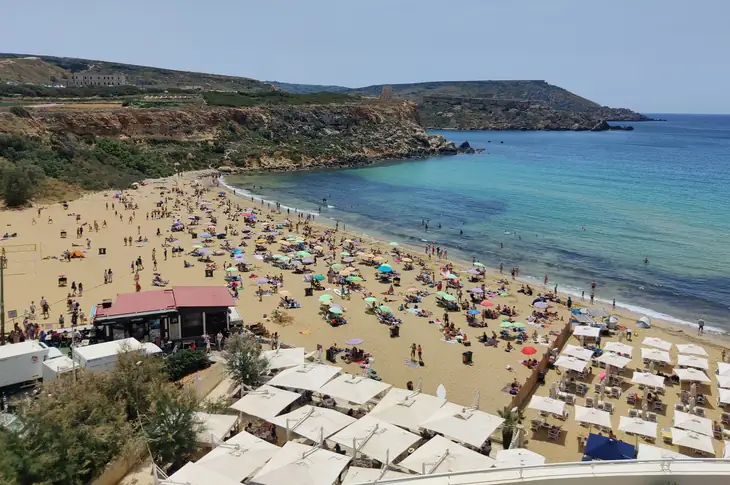
Golden Bay view from Radisson Blu Resort & Spa
The Maltese summer gets into full swing in June, when the days start to get hot and the beaches start to get full. During this time, many of the beaches around the island, which have been awarded the prestigious Blue Flag, would start to be manned with lifeguards and be serviced by many businesses offering all sorts of water sports and amenities you would expect on a popular beach.
June is also a good month to visit Malta if you are looking for lively nightlife and entertainment. There are many festivals and events that take place this month, such as:
- Earth Garden: A four-day celebration of music, art, culture, and sustainability that takes in Ta’ Qali National Park
- Malta International Arts Festival: A two-week event that showcases local and international artists in various disciplines, such as theatre, dance, music, visual arts, and literature. It features performances, exhibitions, workshops, and talks.
- L-Ghanja tal-Poplu: A song contest that promotes Maltese language and culture and features original songs in Maltese that reflect the social and political issues of the country.
As you might expect, June tends to be more expensive and crowded than off-season months. You can expect higher prices for accommodation and flights and more tourists at the attractions and sights. As heat waves are also common during this time of the year, it can also get very hot for some outdoor activities.
- Minimum Temperature: 19.4°C
- Maximum Temperature: 28.2°C
- Sea Temperature: 22.0°C
- Sunrise: 5:54 a.m.
- Sunset: 8:21 p.m.
July
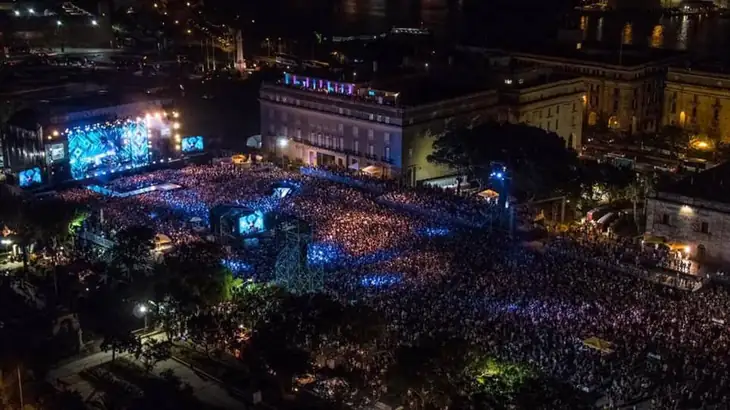
Isle Of MTV
July is when the heat gets up to 11, so expect scorching and sunny days with little rain and little to no breeze. The sea is ideal for all water-related activities, but it would be too hot to stay outside for a whole day. It’s actually not recommended by the health authorities, so make sure you mix your indoor and outdoor activities.
July is also a good month to visit Malta if you are looking for summer vibes and fun. There are many festivals and events that take place this month, such as:
- Isle of MTV Malta: A free open-air concert that features international pop and rock stars such as David Guetta, Rita Ora, Martin Garrix, and more. The event attracts thousands of music fans from all over the world, which specifically for this event.
- Malta Jazz Festival: A five-day event that showcases local and international jazz musicians in various venues around Valletta. It features concerts, jam sessions, masterclasses, and workshops.
- Farsons Beer Festival: A 10-day event that celebrates the local beer production and culture. The festival will include live music, food stalls, games, and of course lots of beer to try.
- The traditional festas happen every weekend in different towns across the islands.
July is considered peak season in Malta, so expect to pay the highest prices for your accommodations and flights to the islands.
- Minimum Temperature: 22.3°C
- Maximum Temperature: 31.3°C
- Sea Temperature: 25.0°C
- Sunrise: 5:54 a.m.
- Sunset: 8:21 p.m.
August
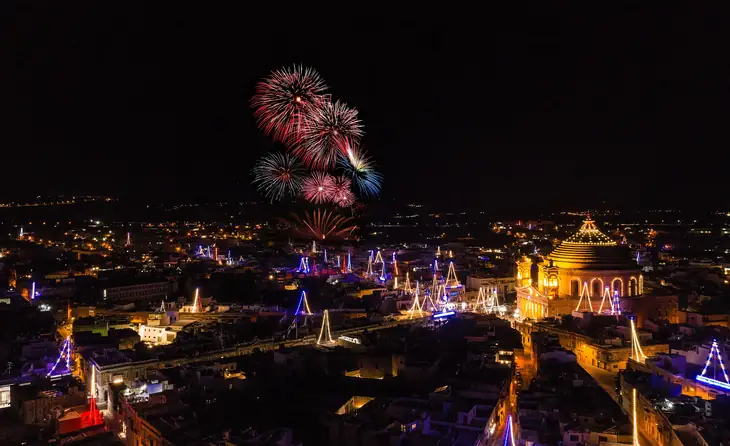
Mosta Village Feast | Image by StefanM76 on Wikimedia Commons
August is similar to July in terms of weather, prices, and crowds, but it’s also a good month to visit Malta if you are interested in one of the many festivals that get organised on the islands. The month also features the feast of Santa Marija (Assumption Day), which takes place on August 15th. It is a national holiday that celebrates the assumption of the Virgin Mary into heaven. It features processions, fireworks, and band marches in several localities around Malta and Gozo.
Some highlights of the festivals in August are:
- Summer Daze Malta is a music festival that features local and international DJs and artists, such as Calvin Harris, Martin Garrix, Tyga, and more. It takes place in various venues around the island, such as Ta’ Qali National Park, Cafe del Mar, and Gianpula Village.
- Glitch Festival: A four-day festival of house and techno music that takes place in many locations, including rooftop pool parties and secret cave raves.
- Delicata Classic Wine Festival: A wine festival that showcases the local wine production and culture It features wine tastings, live music, food stalls, and art exhibitions.
- Pinta - Valletta Beer Festival: A three-day festival of beer, music, food, and fun that takes place every August in the historic Tritoni Square in Valletta.
Just as in July, August can get very hot, even if the temperatures start to get lower around the end of the month, when you can also expect the first storms. August, however, is still considered peak season, so you will still have to pay top dollar for your accommodations and flights.
- Minimum Temperature: 22.8°C
- Maximum Temperature: 31.6°C
- Sea Temperature: 26.0°C
- Sunrise: 6:23 a.m.
- Sunset: 7:47 p.m.
September
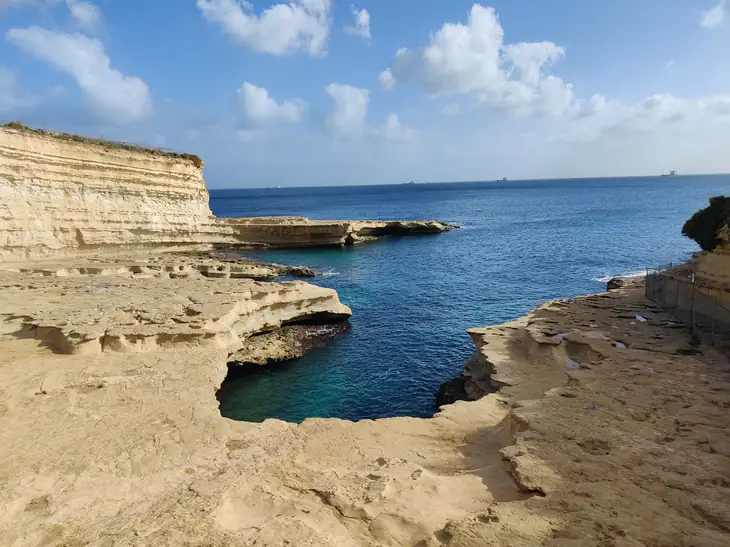
St. Peter's Pool | Image by Giuseppe Milo on Wikimedia Commons
The crowds and the soaring temperatures start to dwindle in September, but this month is one of the best months for a beach holiday. Beaches like the Blue Lagoon will be less crowded, but the possibility of having a few stormy days increases as the month goes by. It is also worth nothing that the lifeguard service stops on September 15.
Prices for accommodation and flights start to get cheaper in September, so if you are on a budget but don’t want to miss the fun of the island, September is a great month to visit Malta.
- Minimum Temperature: 20.6°C
- Maximum Temperature: 28.4°C
- Sea Temperature: 25.0°C
- Sunrise: 6:53 a.m.
- Sunset: 7:01 p.m.
October
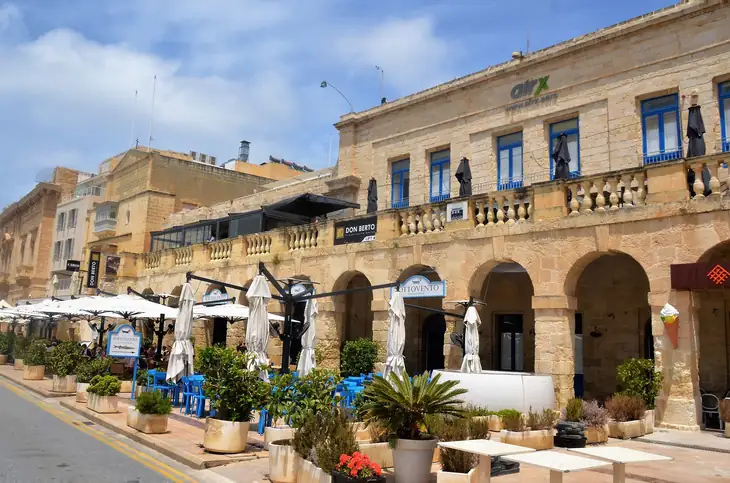
Don Berto Restaurant at Birgu Waterfront | Image by Eduardo Arostegui on Flickr
October marks the beginning of autumn in Malta. The weather becomes cooler and rainier, but most days will still be quite sunny and pleasant. The sea would still be warm enough for swimming, while crowds would be gone from the beaches. October is also a good month to visit Malta if you are on a budget.
October is the month when a number of interesting events take place, like:
- Notte Bianca: A night event that transforms Valletta into a cultural hub It features art, music, dance, theatre, and food in various venues around the city. It attracts thousands of visitors who enjoy the free entertainment and activities.
- Birgufest is a weekend event that celebrates the history and heritage of Birgu, one of the oldest and most beautiful cities in Malta. It features re-enactments, exhibitions, concerts, and candle-lit streets.
- Rolex Middle Sea Race: A prestigious sailing race that starts and ends in Malta It covers a distance of 606 nautical miles and passes by Sicily, Stromboli, Pantelleria, Lampedusa, and Gozo.
- Mdina Grand Prix: A classic car race that takes place in the streets of Mdina, the old capital of Malta, and nearby Rabat. It features vintage and historic cars from different eras and countries. The event is usually held in early October.
The main downside of visiting Malta in October is that the days are shorter and the weather can be very unpredictable, with some of the worst storms to hit the islands in recent years happening in October. So if you are visiting during this month, make sure you are prepared for the worst.
- Minimum Temperature: 17.7°C
- Maximum Temperature: 25.1°C
- Sea Temperature: 23.0°C
- Sunrise: 7:23 a.m.
- Sunset: 6:14 p.m.
November
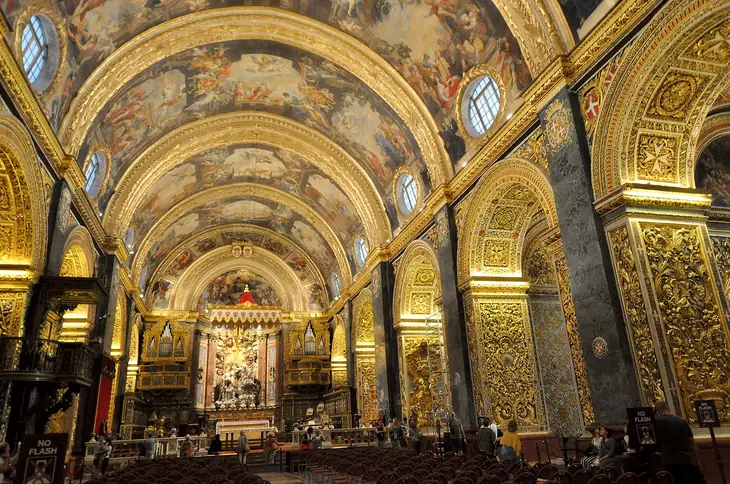
St. John's Co-Cathedral | Image by Herbert Frank on Flickr
November is one of the cheapest and quietest months to visit Malta, as there are fewer tourists and lower prices for accommodation and flights. So if you’re looking for a break from the hustle and bustle of European cities, then Malta is a great option to consider.
Similar to Malta, Gozo (Malta’s sister island) would be a great place to disconnect completely and enjoy some of the local natural attractions. The sea temperature would still be rather warm, so it’s also a great month to explore the many beaches along the Maltese coast.
November is the month of the Three Palaces Festival, which is a music festival that showcases local and international classical musicians in various historic venues around Malta.
As November is quite a low season, some attractions may be closed or have reduced hours during the winter season, so make sure to check before you go.
- Minimum Temperature: 14.4°C
- Maximum Temperature: 21.0°C
- Sea Temperature: 20.0°C
- Sunrise: 6:55 a.m.
- Sunset: 4:40 p.m.
December
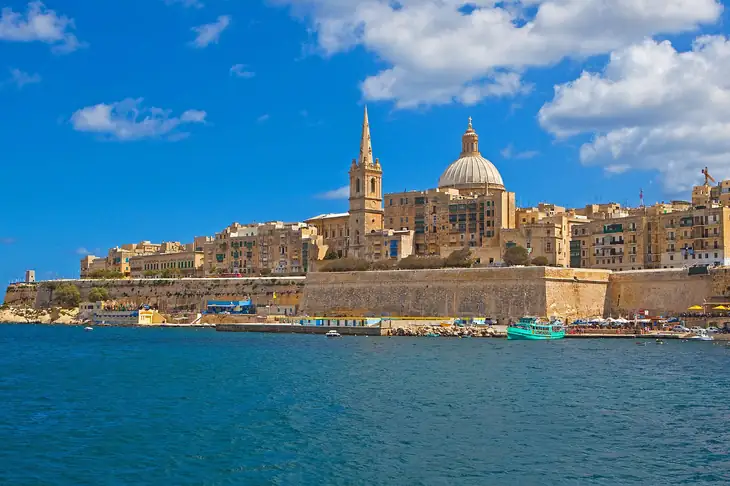
Valletta from the sea | Image by Bengt Nyman on Wikimedia Commons
December is similar to November in terms of weather, prices, and crowds, but prices can get higher around Christmas and New Year’s.
The highlight of visiting Malta in December is the festive and charming Christmas and New Year celebrations in Valletta and other towns. You can witness colourful decorations, lights, nativity scenes, carols, and markets. You can also taste some of the typical Christmas foods, such as imbuljuta (a hot drink made with chestnuts, cocoa, cloves, and citrus peel), qaghaq tal-ghasel (honey rings), and mince pies.
During December, many localities will organise activities around the Nativity of Christ, with many exhibitions of cribs and other artifacts related to the period.
The sea does get cold to swim, and you can expect rain or at least cloud cover on most days, so if you are looking forward to some sunshine, then you are better off planning your trip during other months.
- Minimum Temperature: 11.3°C
- Maximum Temperature: 17.1°C
- Sea Temperature: 28.0°C
- Sunrise: 7:09 a.m.
- Sunset: 4:34 p.m.
Conclusion
In this article, we have explored the different months in Malta, what the weather is like, and how they affect the crowds and prices. We hope we have convinced you that Malta is a year-round destination that offers something for everyone, whether it is sun, sea, sand, culture, history, or festivals. Depending on your preferences and interests, you can choose the best time to visit Malta for your ideal vacation. Here is a summary of the main points:
- The high season (June–August) is the best time for brilliant beaches and big summer festivals, but also the most crowded and expensive.
- The shoulder season (March–May and September–October) is the best time for active adventures and sporty events, with moderate temperatures and fewer tourists.
- The low season (November–February) is the best time for accommodation bargains and seeing cultural sites, but it is also the coolest and rainiest.
We hope this article has helped you pick the best time to visit the Maltese islands.







